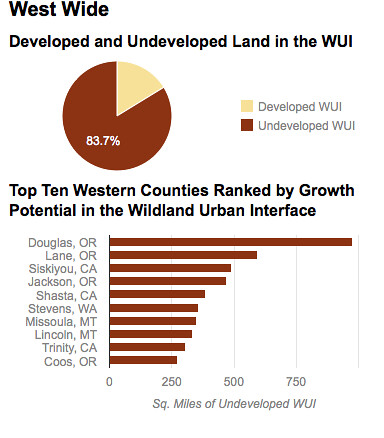
A helicopter helps fight the Government Flats Complex fire near the Dalles, Oregon.
David P. Cain
This week, the LA times reported that the cost of fighting the massive Rim Fire in Yosemite National Park had hit $100 million.
That got me wondering how much we’ve spent fighting fires in the Northwest this year. Tom Knappenberger, with the Forest Service, was kind enough to get me the numbers on the 2013 fire season (so far) in Oregon and Washington:
Cost to Date: $250 million (and counting)
Number of fires: 3,100
Number of large Fires: 61
Acres Burned: 475,000
And for comparison:
2012 Suppression Cost: $257 million
2012 Acres: 1.6 million acres (about half was rangeland)
Average number of acres burned in the last 10 years: 490,000
Large fires, if you’re wondering, are more than 100 acres in timber or more than 300 acres in grassland.
Of course $250 million is just the direct cost of fighting the fires. There are more costs to consider: the cost of emergency room visits related to smoke, for example. Or the revenue lost by rafting outfitters when a Wild and Scenic River shuts down.
It's getting more expensive to fight fires in the west, and one of my favorite regional think tanks, Headwaters Economics, has written a good analysis of how and why. Here's an excerpt from their report.
“In the 1990s, the average cost of federal wildfire protection and suppression was less than $1 billion annually. Since 2002, the cost of federal wildfire protection and suppression has averaged more than $3 billion per year. Wildfire protection now accounts for nearly half of the Forest Service annual budget, and more than 10 percent of the budget for all Department of the Interior agencies. These figures do not include the $1-$2 billion spent by states on wildfire protection or an untold amount spent by local governments. -- Ross Gorte, Ph.D. From The Rising Cost of Wildfire Protection”
There are ecological and environmental reasons we are spending more fighting wildfires. Overgrazing. Decades of fire suppression policy that left us with dense forests prone to high-intensity crown fires. The many impacts of a changing climate. Earlier snowmelt. Longer, drier fire seasons. Large pine beetle outbreaks that leave behind acres of dead trees.
But as Gorte points out, there’s another key reason the cost of fighting fires is going up: we’re building homes near forests.
Gorte cites a number of studies on the wildland-urban interface that have shown a correlation between wildfire costs and the number and location of houses.
And that strikes a chord with me. The city of Ashland, just down the road from where I live, is in the middle of a complex, expensive (think helicopter logging!) attempt to thin the nearby forest stands and reduce the risk that a catastrophic wildfire will sweep through the town and destroy its water supply.
And according to the Headwaters study, several Southern Oregon and Northern California counties top the list of places where new homes are likely to be built near wildfire prone forests.
This is just a screenshot. You can click on it, or here for an interactive infographic that Headwaters created on wildfires and development.
_-- Amelia Templeton_

